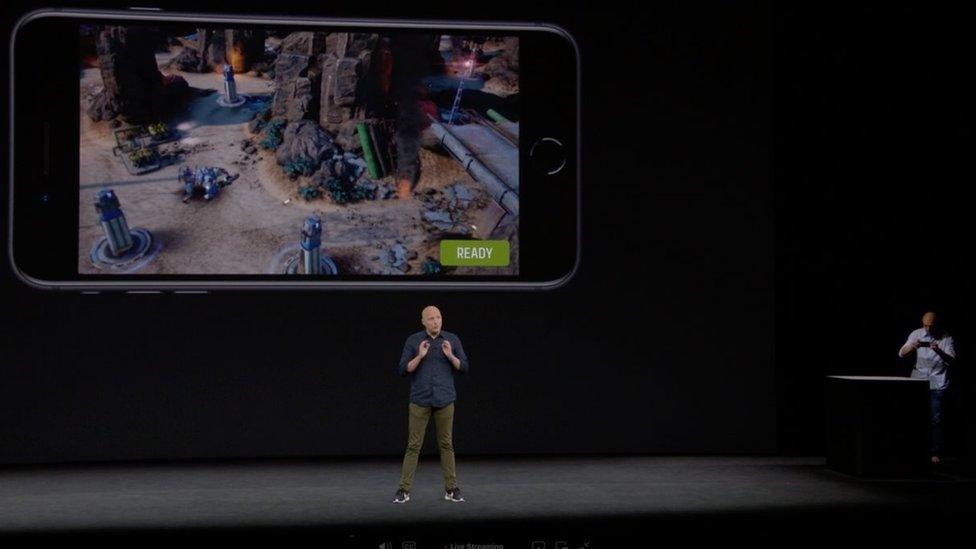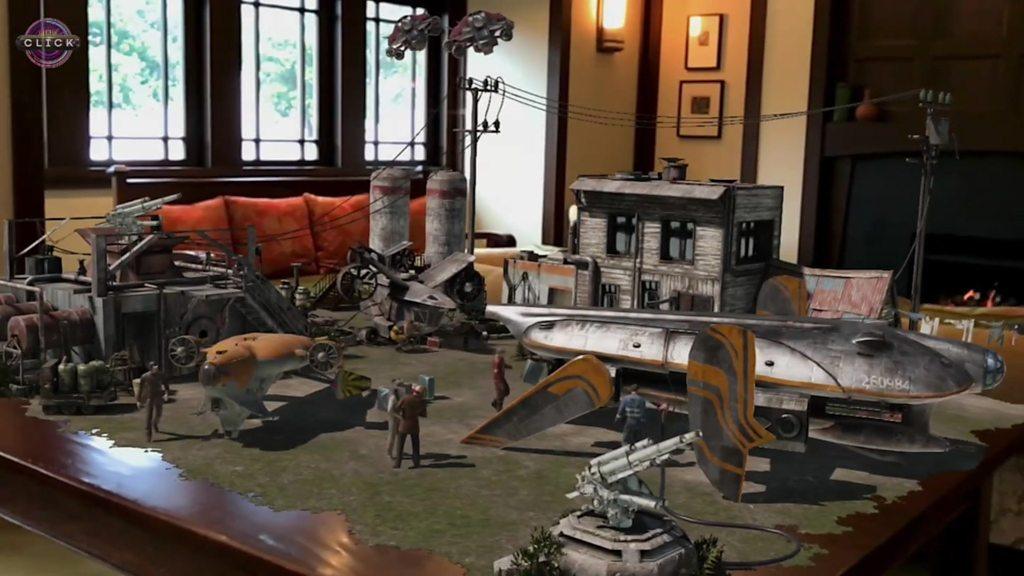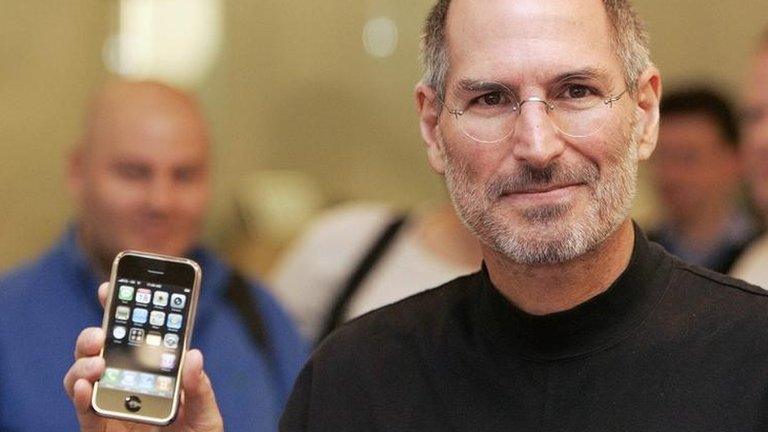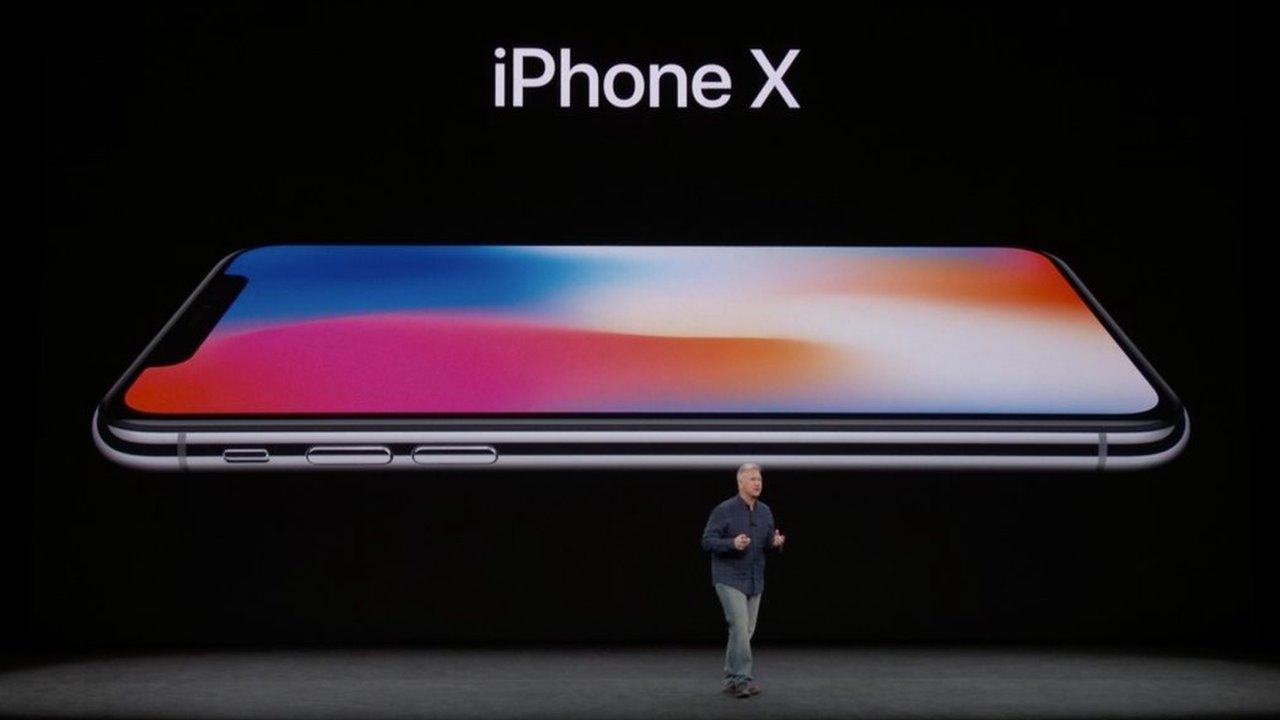Apple’s augmented reality ambitions
- Published
WATCH: What can AR do on iPhone?
Face recognition, an OLED screen and a £999 price tag will grab all the headlines. But software developers around the world were waiting on one thing from the Apple event - more news on augmented reality.
And slap bang in the middle of the iPhone 8 unveiling, a long section about AR, and a demo from a games developer - a clear signal that the company sees the technology as a key attraction in its new phones.
Back in May, Apple released ARKit, its augmented reality development tool, hoping that developers would rush to try it out and give the company a lead in the fast growing technology, which imposes virtual objects on the real world. And it has done just that.
Developers have been quick to experiment, showing off all kinds of apps, from a simple AR measuring tape to work out whether that chunky sofa will fit through the door, to a restaurant app that puts a virtual burger on your real plate.
WATCH: Apple's event in two minutes
This week I found myself chasing pigeons around a cool shared office space in Shoreditch with Jamie Shoard. His tiny four-person company has used ARKit to develop Pigeon Panic, which he describes as "an utterly ridiculous game, built to live out your very achievable fantasies of running haphazardly into large flocks of virtual pigeons".
Augmented reality has been around for a long time, but it was only with the arrival of Pokemon Go last year that it entered the lives of millions of smartphone users.
Jamie Shoard says that until now developing AR apps was a complex business that could only be contemplated by major developers, and ARKit has changed that: "The technology would have taken years to create and a team of hundreds - now it can be done in matter of months by small teams like ours."
He now expects a new flowering of creativity in an app landscape that has been getting quite stale.

Apple showed off AR games played via its new smartphones
Bad buzz
But if Apple is to spark this AR revolution, it has a number of hurdles to clear. First, there is plenty of competition.
For some years Google has been pushing its Tango augmented reality platform, but with just a couple of smartphones boasting the tech to make it work, the company saw the writing on the wall when ARKit came out.
It has ditched the brand and unveiled ARCore, which will work on millions of Android phones, with a big pitch to the developer community to get involved. Google's own designers have also demonstrated their first experiments, showing off a Streetview animation which allows you to zoom into the British Museum, external from the front of the building, and a training app demonstrating how to use an espresso machine, external.
The other big player is Microsoft with its Hololens headset, which the firm is using to bring what it calls mixed reality into the workplace and the classroom. While it may provide a more convincing experience than AR seen through a mobile phone, the headset is expensive and is not at this stage aimed at the consumer market.
Microsoft's Kudo Tsunoda spoke to Rory Cellan-Jones about HoloLens
If anyone can be considered a veteran of the augmented reality world, it is Steve Dann, whose Amplified Robot studio is based in Soho.
His first AR project was for the Times newspaper 10 years ago and involved the use of a laptop's camera - smartphones were not in common use back then.
He admits that the revolution has taken longer to take off than he imagined - "the technology has not advanced quite as quickly as we hoped it would". But he does believe that Apple's initiative is a key moment for augmented reality.
"ARKit makes a big difference because it's an Apple statement of intent," he explained.
"Any time you get Apple entering into something, it is fully committed, and that will drag other companies in."
But however intense the competition to create compelling new uses for AR, there is another nagging question - do we really want to see our world through the lens of our smartphone camera?

The buzz has faded around pioneering augmented reality game Pokemon Go
The buzz around Pokemon Go has died down, and new augmented reality apps have not taken off in the same way. Paul Lee, head of technology research at Deloitte, says get ready for a big upsurge in interest: "I expect there will be hundreds or millions of smartphone users who use augmented reality enhanced digital apps at least five times in 2018."
He says we are already using AR without realising it when for instance we use filters in photo apps to improve the real world. AR will become a feature of many existing apps. "Augmenting reality is a very human activity - hence the appeal. It's a form of digital make up."
But Mr Dann thinks another technology advance may be needed before most people are ready to augment their world.
"I think ARKit is a step on the road to the future. I think augmented reality will really take off when you can see it through head mounted displays or a pair of glasses," he says.
Of course, that has already been tried - but Google Glass proved unpalatable to its users. Maybe somewhere inside the Apple Park spaceship, engineers are working on an iHeadset, but for now the company is counting on the iPhone as its weapon to barge its way into another new market.
- Published29 July 2017

- Published12 September 2017

- Attribution
- Published5 September 2017

- Published12 September 2017
